Monitoring Migration in Eilat, Israel
Posted on in In the Field by Ana De Osma Vargas-Machuca, Autumn 2016 Conservation Science Trainee
A month ago I came back home from my Israeli adventure, where I have been monitoring the spring raptor migration in Eilat, a dream came true.
This all began in 2011, when I met Re'a Shaish while volunteering in the Migres Program in Tarifa, Spain. He is an Israeli guy who was extremely passionate about birds, and at only 19 years old was able to identify every single species of raptors flying over us. He told us about Eilat and the migration there, and since that moment Eilat had been always on my mind.
Last year we met again in Extremadura for a couple of days, where he was assisting Yoav Perlman with his field work, and both of them told me again about the spring migration in Eilat. I was working as a biologist in Spain, but it wasn't anything related to conservation biology. I greatly missed being in the field, so at the end of the year I arranged to be off from work in the spring and contacted Noam Weiss (the director of the IBRCE) to apply for a position as a counter in the raptor team. When I got his reply telling me that I was accepted, I was elated.
So there I was at the end of January, flying to Eilat, watching through the window the beautiful Negev desert, getting goosebumps and feeling excited for all of the experiences to come.

We were two teams of volunteers: the raptor counters, working mainly at the stations in the mountains, and the ringers and guides, working at the sanctuary.
The first of February was the first day of the count. The count was conducted by four of us (Daniel, from UK; Gaidis from Latvia, Ragnar from Denmark, and myself), divided in two stations, Low Mt. and High Mt. Station, both of them in the Eilat mountains, close to the Egypt border.
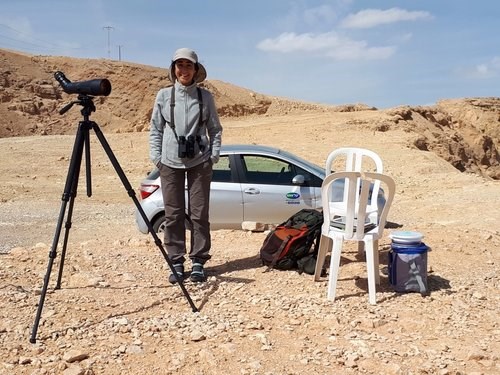
At the beginning of the season, the migration was still very low, so those not counting would have the chance to go to the sanctuary to assist with other work or to just bird around. I remember the first day being at High Mt., and even if I had no birds migrating, I felt so grateful for just having the chance of being there, in such a beautiful office, with Jordan on the east, the Red Sea and Saudi Arabia in the south and Egypt in the west.
Some brown-necked ravens, Tristam's starlings, two dessert larks, a hooded wheatear, and a very nice juvenile white crowned wheatear were our regular visitors who sat at the station and kept us company. On those days of counting steppe eagles in February, there were some amazing days with birds flying overhead, very close to us. Such incredible creatures in that stunning landscape... I was happy no matter what weather I had, how many eagles were migrating or how many people visiting; being there was just amazing.
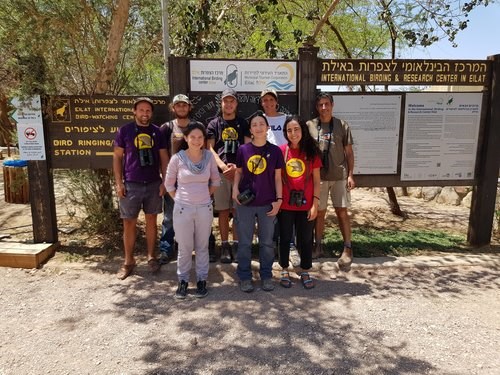
In February we would finish work before sunset and still have time to go to the beach for some snorkeling before the light was gone. We lived in the Field School, right in front of the beach near the Taba border with Egypt, so coming back home from the mountains and walking to the beach with the guys for some snorkeling was our daily afternoon routine. We found some spots with well-protected coral reef and snorkeling there with all of those beautiful fish was delightful.
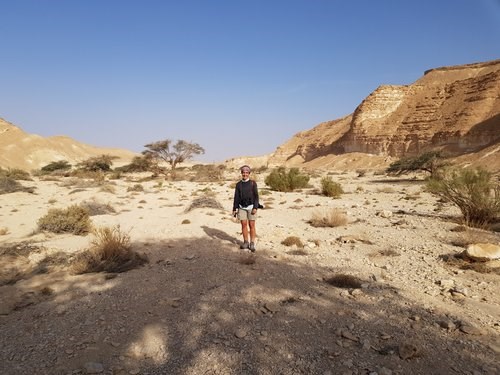
First week of March, I was selected together with Anton (a Danish ringer) and Ohad (Israeli birdwatcher) to be part of the Arabian warbler survey taking part in the Arava Valley, close to Hatzeva (2 hours north to Eilat). This survey was very important, as there is very little information about the species, and the first and last survey was on the 1980, conducted by the SPNI. We walked around 10-15 km everyday in the desert, looking for Arabian warbler territories but also recording every bird species around, but this incredible opportunity of going where few have had the chance to go felt like a holiday. It was really special to be surrounded by that nature, and at the same time to know that we were making an impact for the species. We actually found more new territories than they were expecting, and I feel very thankful to Noam, Inbar, and Eli for letting me be part of this.
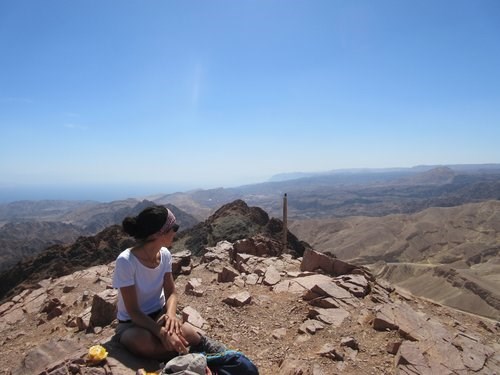
The rest of March flew by, and the migration came to peak time. Steppe buzzards, black kites, black storks together with other species started to pack the skies. Days became longer, counting from sunrise to sunset. It was exciting and exhausting at the same time, but we were happy no matter how tired we were; having those numbers of raptors migrating in front of you gives the energy you need to keep clicking and counting. And that's what we did until the 10th of April when we completed the count. From the 12th -14th of April we were part of the Raptor breeding survey, and we finished work the 15th.
After that I went traveling around the country, spending most of the time enjoying the north (Hermon mountain, Golan Heights, Hula Valley), and it was so different from the desert I had worked in. I returned to Spain at the end of April.
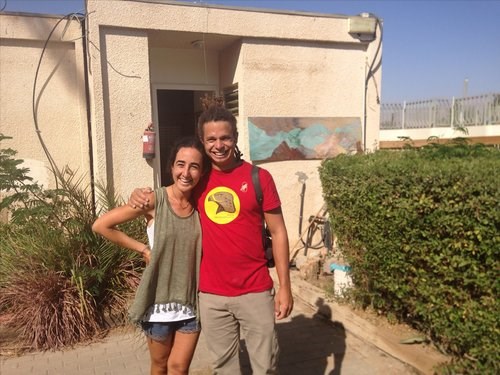
It's difficult to summarize in a post a 3-month experience, so I hope at least I gave you a brief feeling of how it was. Not everything was just work, there were also days off, and I spent most of them going hiking in the Eilat mountains, where there was much to explore and see.
Israel is a beautiful country with very warm and welcoming people, and felt at home from the start. Thanks to everyone who made this experience so amazing for me: my teammates, all of the special people that stop by High Mt. station, Frank and his lovely company, Libi and Tdazok, but specially Noam and my good friend Re'a; without them none of this would have happened.
Shalom!
For those who want to check the numbers of birds recorded this 2018 season, check this out: http://trektellen.org/search?q=Eilat
For anyone interested in migration, follow the Eilat Birding Center - IBRCE on Facebook!